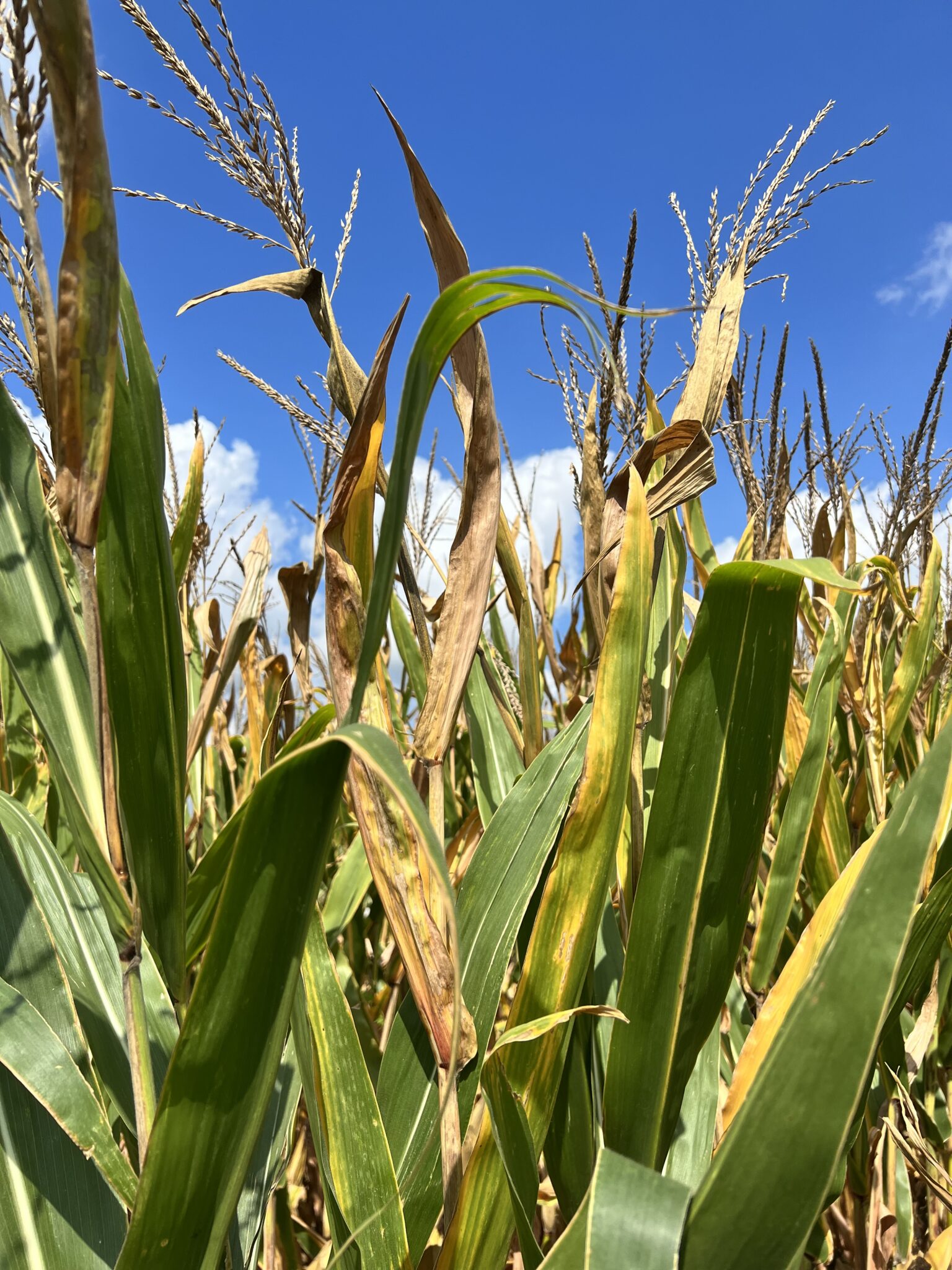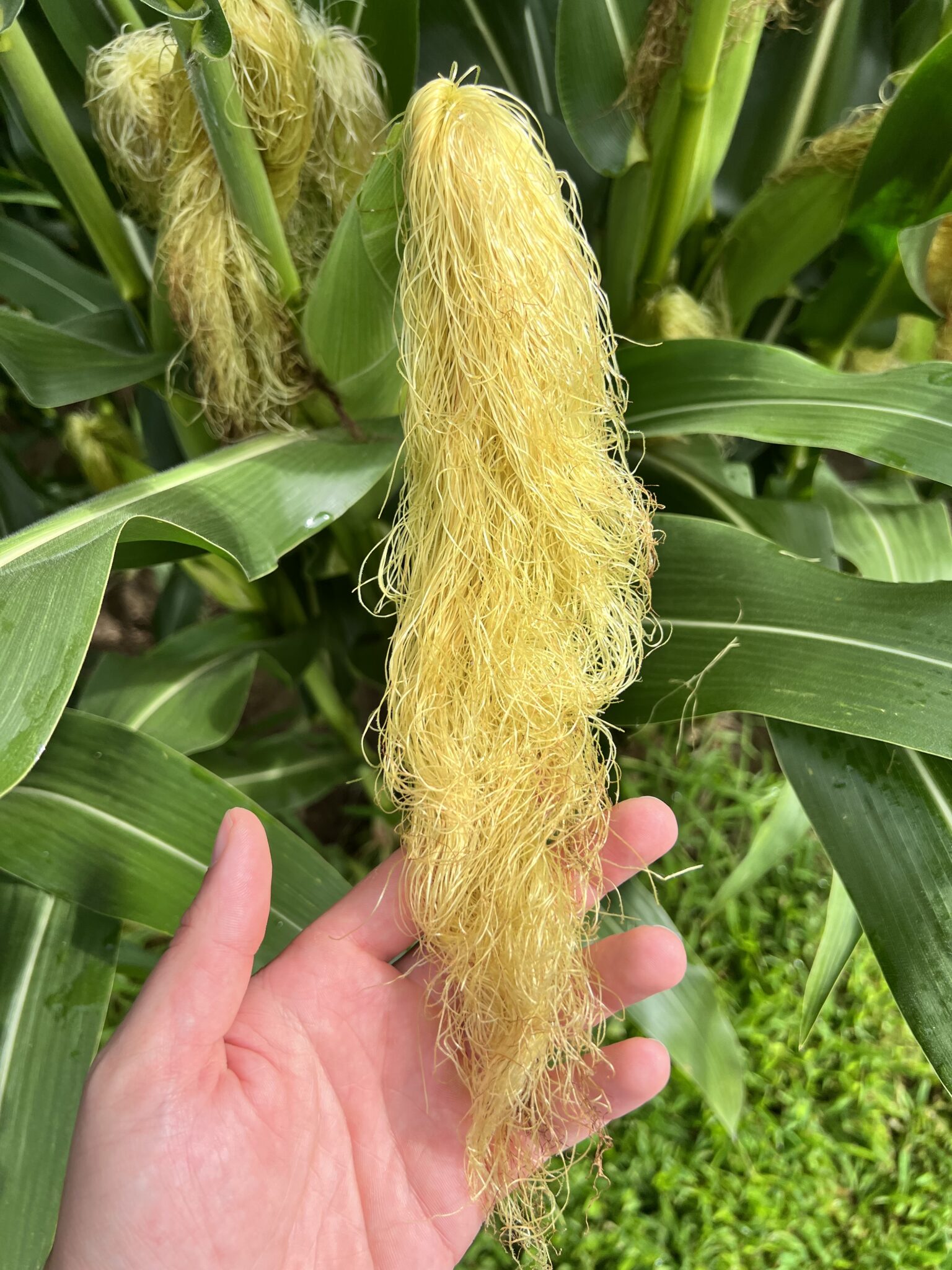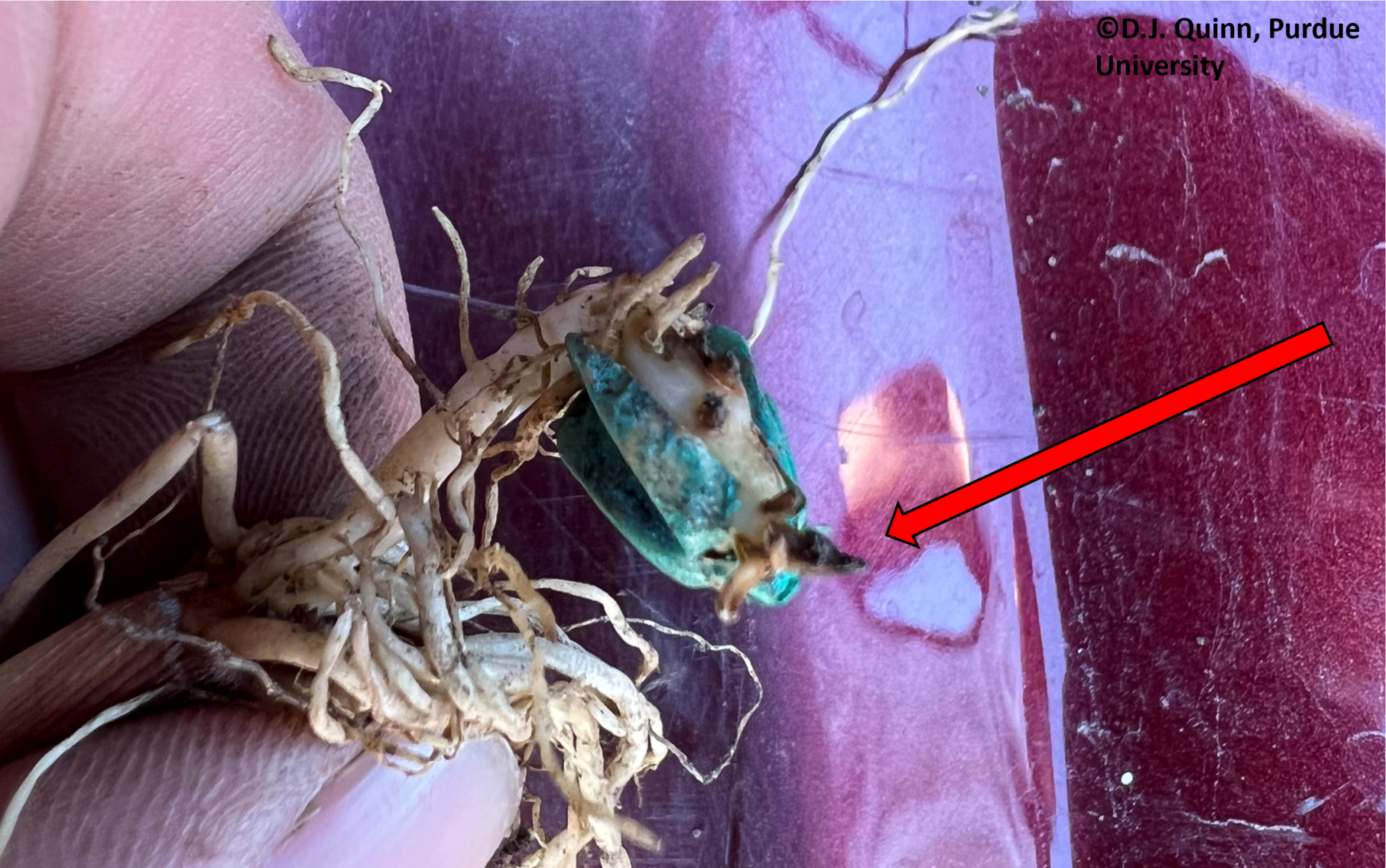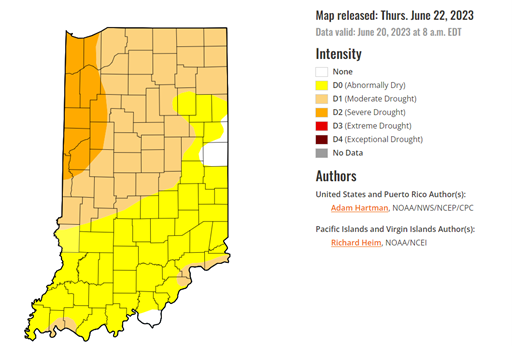
It is now time to evaluate fields for any stalk or ear rot symptoms. This will aid in making assessments about field harvest order and if there is a risk of mycotoxin contamination.


It is now time to evaluate fields for any stalk or ear rot symptoms. This will aid in making assessments about field harvest order and if there is a risk of mycotoxin contamination.

As corn plants progress through grain fill and approach maturity, plant leaves naturally begin to senesce or die.

The process of pollination is one of the most critical periods for grain yield determination in corn and successful pollination is largely determined by the successful synchronization between silk elongation, tassel emergence, and pollen shed.
In recent years, Indiana has experienced an increase in air quality concerns during the summer due to elevated incidence and severity of wildfires in Canada and the western U.S.
Recent storms which crossed Indiana brought welcome rains to current dry conditions, yet were not without additional challenges, which includes hail damage.

Many farmers in Indiana utilize starter fertilizer applications, specifically applied through the planter and in close proximity to the seed, which are known to provide benefits such as early crop access to necessary nutrients, improved and more rapid plant growth, and reduced grain moisture at harvest.

The biggest challenge so far this year for Indiana corn production has been the dry conditions experienced throughout the state (Figure 1).
He shares weed management tips and what growers are facing right now.

As a young agronomist, one of the first things I learned was that when assessing corn emergence and stand establishment following planting, is that it is always important to have a shovel with you.
Once the corn seed is planted, the waiting game for the first corn plants to emerge begins, which also means assessing (or worrying) if any issues had occurred.
© 2025 Purdue University | An equal access/equal opportunity university | Copyright Complaints | Maintained by Pest&Crop newsletter
If you have trouble accessing this page because of a disability, please contact Pest&Crop newsletter at luck@purdue.edu.